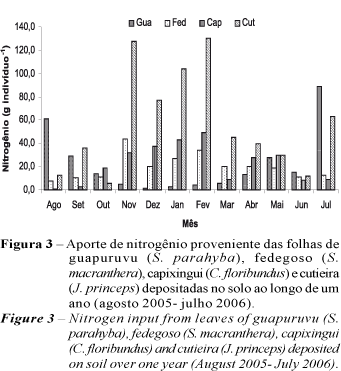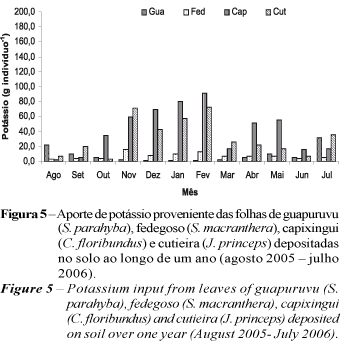This work aimed to study litter fall deposition of native species from the Atlantic Forest and its potential nutrient input in the agroforestry system. Forty sampling points were determined in the experimental site between the coffee rows where litter collectors were placed. The deposited leaves were collected each month over a year, selected by species, and their dry weight was determined. Fresh and senescent leaves were also collected and their macronutrient was also determined. Among the studied species, cutieira (Joannesia princeps Vell.) presented the highest litter production (76.41 kg MS individual-1 year-1), followed by capixingui (Croton floribundus Spreng.), guapuruvu (Schizolobium parahyba Vell.) and fedegoso (Senna macranthera (Collad).). Cutieira and capixingui trees showed the highest leaf fall in February, fedegoso in November and guapuruvu in July. Cutieira showed high nitrogen input capacity (438.5 g tree-1 year-1), capixingui showed high calcium (581 g tree-1 year-1) and potassium (299.7 g tree-1 year-1) . Despite the high nitrogen content in the fedegoso fresh leaves (2.83%), high translocation and low litter fall resulted in small nitrogen input compared to the other species. Capixingui and cutieira showed high potential of nutrient input to the agroforestry system, and in particular, to coffee plants, during the highest nutrient demand period.
Joannesia princeps; Croton floribundus; Schizolobium parahyba









